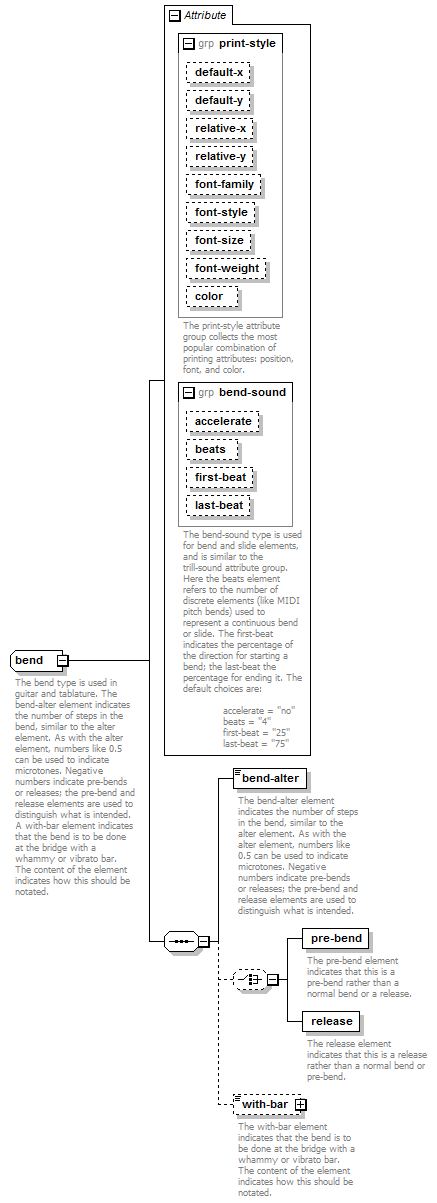<xs:complexType name="bend">
<xs:annotation>
<xs:documentation>The bend type is used in guitar and tablature. The bend-alter element indicates the number of steps in the bend, similar to the alter element. As with the alter element, numbers like 0.5 can be used to indicate microtones. Negative numbers indicate pre-bends or releases; the pre-bend and release elements are used to distinguish what is intended. A with-bar element indicates that the bend is to be done at the bridge with a whammy or vibrato bar. The content of the element indicates how this should be notated.</xs:documentation>
</xs:annotation>
<xs:sequence>
<xs:element name="bend-alter" type="semitones">
<xs:annotation>
<xs:documentation>The bend-alter element indicates the number of steps in the bend, similar to the alter element. As with the alter element, numbers like 0.5 can be used to indicate microtones. Negative numbers indicate pre-bends or releases; the pre-bend and release elements are used to distinguish what is intended.</xs:documentation>
</xs:annotation>
</xs:element>
<xs:choice minOccurs="0">
<xs:element name="pre-bend" type="empty">
<xs:annotation>
<xs:documentation>The pre-bend element indicates that this is a pre-bend rather than a normal bend or a release.</xs:documentation>
</xs:annotation>
</xs:element>
<xs:element name="release" type="empty">
<xs:annotation>
<xs:documentation>The release element indicates that this is a release rather than a normal bend or pre-bend.</xs:documentation>
</xs:annotation>
</xs:element>
</xs:choice>
<xs:element name="with-bar" type="placement-text" minOccurs="0">
<xs:annotation>
<xs:documentation>The with-bar element indicates that the bend is to be done at the bridge with a whammy or vibrato bar. The content of the element indicates how this should be notated.</xs:documentation>
</xs:annotation>
</xs:element>
</xs:sequence>
<xs:attributeGroup ref="print-style"/>
<xs:attributeGroup ref="bend-sound"/>
</xs:complexType> |
